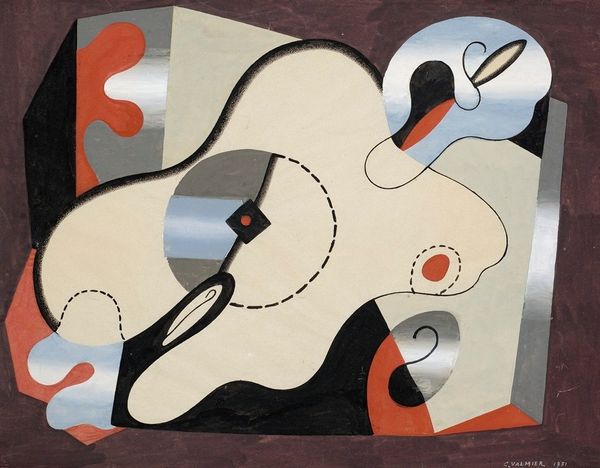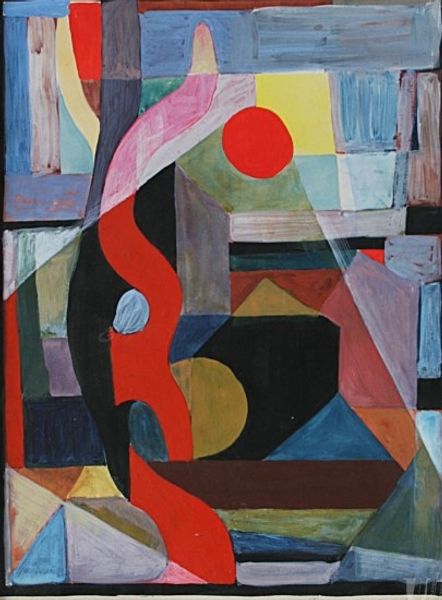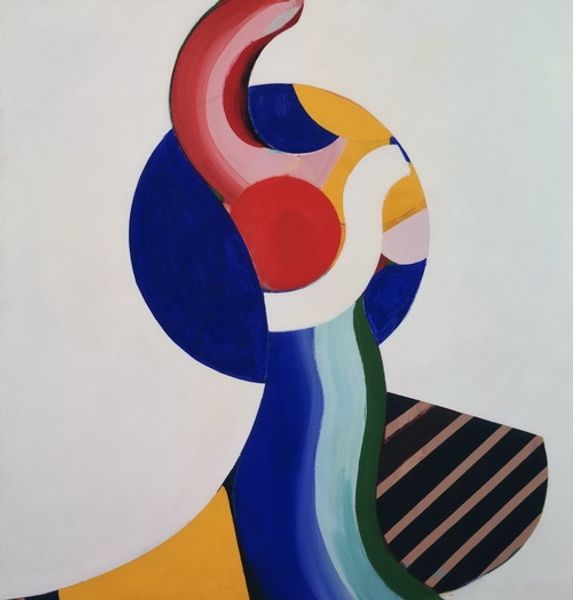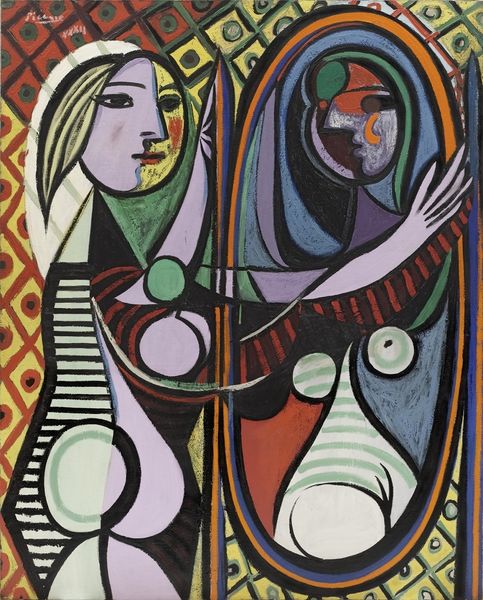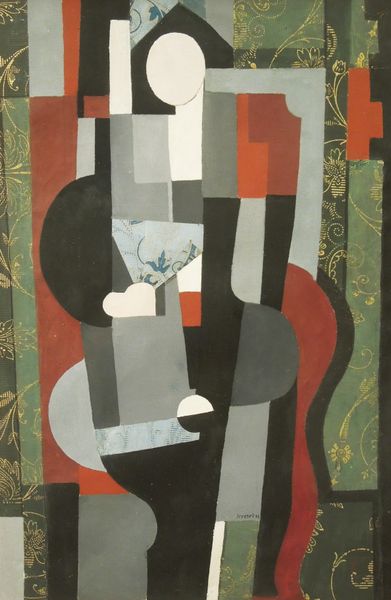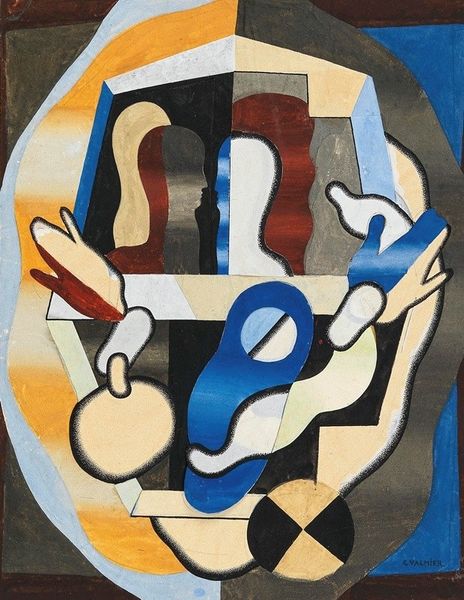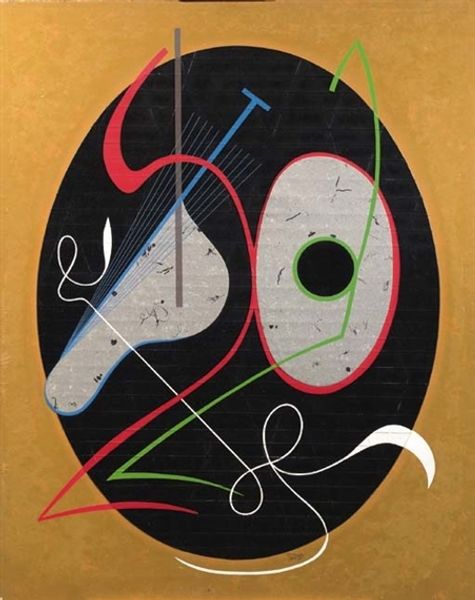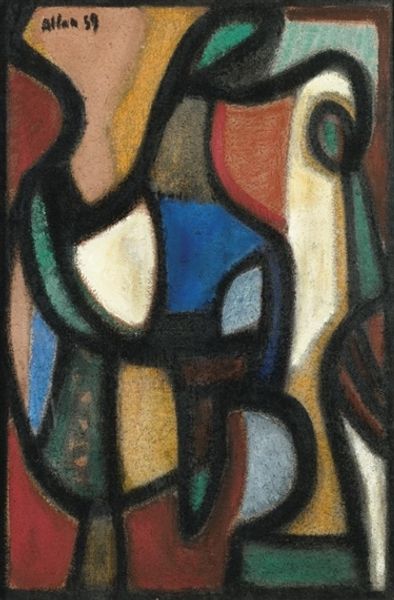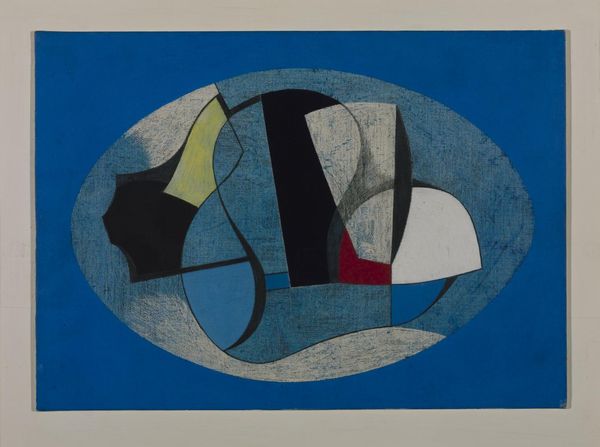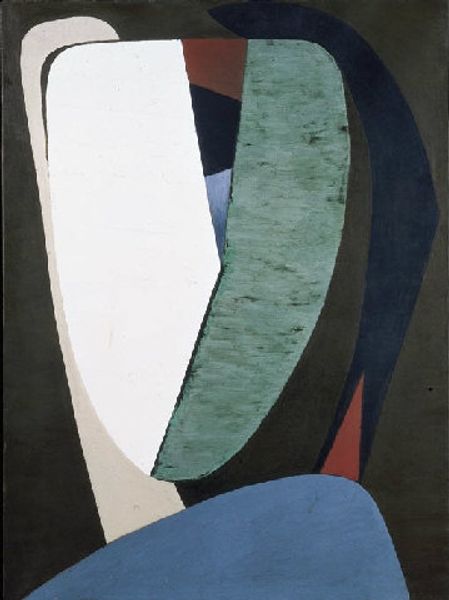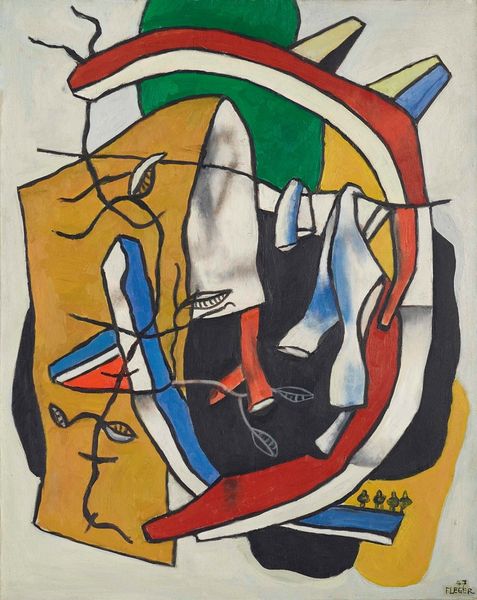
painting, acrylic-paint
#
painting
#
acrylic-paint
#
geometric
#
abstraction
#
modernism
Copyright: Auguste Herbin,Fair Use
Editor: Here we have Auguste Herbin’s "Untitled," from 1931, done in acrylic. It's an intriguing arrangement of geometric forms that somehow evokes a sense of organic life to me. What's your read on this abstract piece? Curator: I appreciate your reading it as organic. I see this work existing within a crucial period where artists grappled with representing lived experience after the First World War. Consider the socio-political climate—mass disillusionment, the rise of industrialization, and anxieties around traditional power structures. How might an artist respond through abstraction? Editor: By maybe stripping away traditional symbols of power or beauty and trying to find new forms of expression? Curator: Exactly. Herbin, aligning with modernist ideals, might have been interested in dismantling visual conventions to explore pure form and color. Look at the interplay between the solid blocks of color and the fluid, almost biomorphic shapes. How does that contrast speak to you? Is it challenging the idea of established aesthetic hierarchies? Editor: It does seem to reject any kind of predictable order. There's a tension there that keeps it interesting. Curator: The 'Untitled' nature is crucial. This suggests Herbin wasn't necessarily aiming to depict a specific subject, but rather to explore universal visual languages and emotional resonances through abstraction. How can a piece devoid of recognizable figures speak to collective experiences? Editor: I see how leaving it untitled invites the viewer to bring their own interpretations and experiences, challenging the established art world norms. Curator: Precisely. And it questions whose experiences are centered and whose are marginalized in the art historical canon. Herbin encourages a more democratic dialogue between the artwork and the observer. Editor: It’s interesting to consider how something so abstract can actually be so socially engaged. Thanks, that's given me a lot to consider! Curator: And it makes us reflect on art's purpose in reflecting the political contexts in which it exists and pushes towards a future where art can be for everyone.
Comments
No comments
Be the first to comment and join the conversation on the ultimate creative platform.

